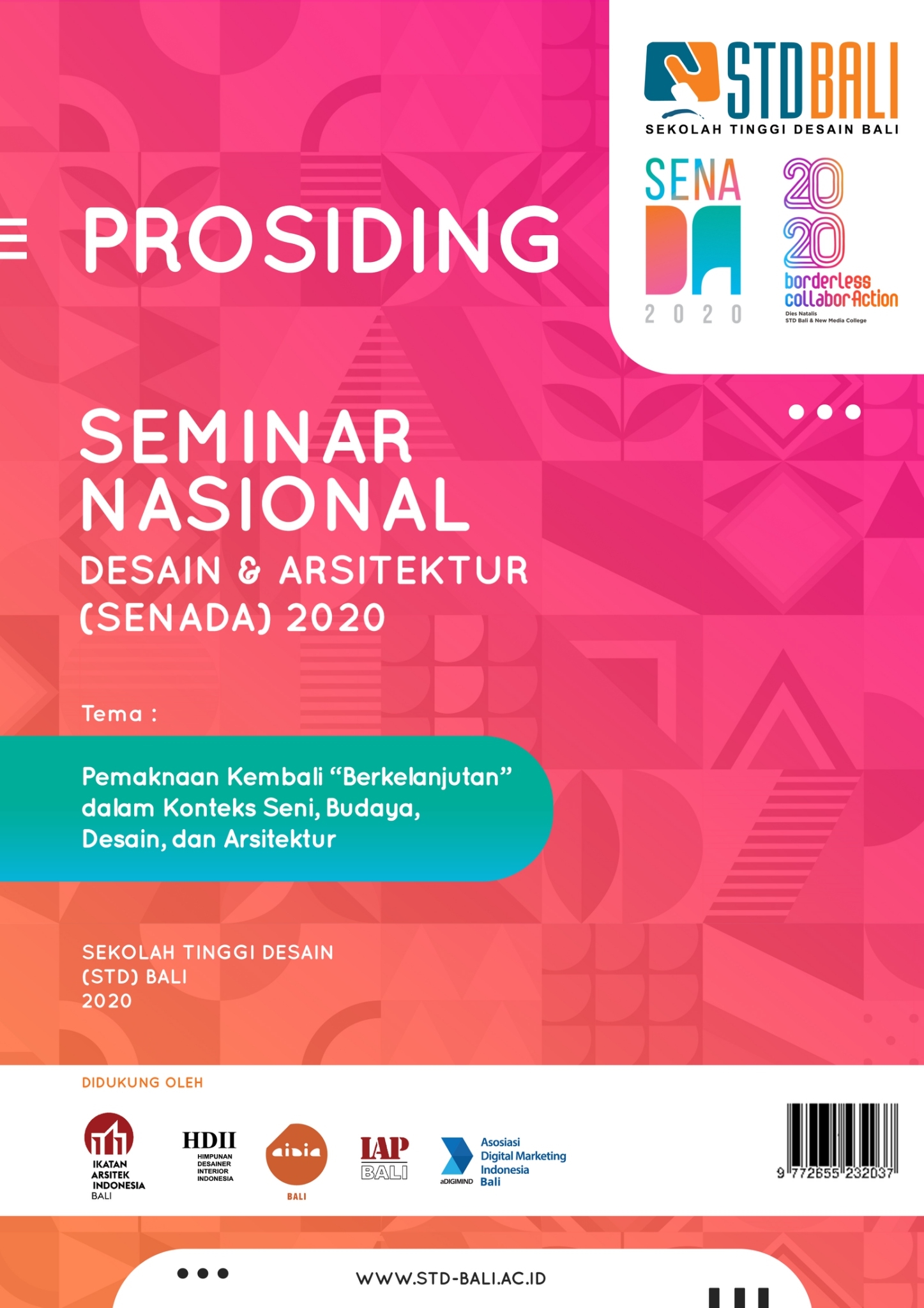TINJAUAN TIPOGRAFI DALAM KONTEKS INDUSTRI 4.0
Keywords:
Tipografi, Digital, Industri 4.0, TeknologiAbstract
Industri 4.0 membawa banyak perubahan dari bagaimana manusia melihat teknologi dan juga industri yang ada. Perubahan tersebut tidak luput juga dirasakan oleh tipografi, dimana pemahaman, batasan, dan juga relevansinya menjadi sebuah topik yang kerap dibahas. Makalah ini merupakan penelitian penulis untuk menelaah posisi dan juga peran desainer dan tipografer dewasa ini. Melalui studi pustaka dan juga analisa pustaka, penulis menarik beberapa kesimpulan yang menjadi dasar argumentasi bagi penulis untuk mendefinisikan kembali tipografi dan juga menyuarakan pertimbangan-pertimbangan tipografi dalam konteks teknologi industri 4.0. Tulisan ini ditutup dengan kesimpulan bahwa perubahan-perubahan yang ada akan justru memperkaya disiplin tipografi kedepannya.
Downloads
References
Bigelow, C., & Day, D. (1983). Digital Typography. Scientific American, 106–119. Retrieved from https://www.scientificamerican.com/article/digital-typography/
Bringhurst, R. (2004). The Elements of Typographic Style (3rd ed.). Hartley & Marks.
Byrne, C. (2004). An Introduction to Typography for Students of Graphic Design. In S. Heller (Ed.), The Education of a Typographer (pp. 2–7). New York: Allworth Press.
Carter, R. (1997). Working with Computer Type 4: Experimental Typography. Switzerland: RotoVision.
Carter, R., Meggs, P. B., Day, B., Maxa, S., & Sanders, M. (2015). Typographic Design: Form and Communication (6th ed.). New Jersey: Wiley.
Cullen, K. (2012). Design Elements: Typography Fundamentals. Massachusetts: Rockport.
Hananto, B. A. (2019a). Identitas Visual Digital Brand Dalam Sosial Media. Seminar Nasional Desain Dan Arsitektur (SENADA) 2019, 2, 56–61.
Hananto, B. A. (2019b). Tinjauan Karya Desain Poster Quotes dalam Mata Kuliah Tipografi Dasar. Jurnal Desain, 6(3), 195–206.
Hananto, B. A., Syarief, A., & Udjianto, A. N. (2018). Pengembangan Motif Batik Semarangan Menggunakan Tipografi Sebagai Gagasan Visual. Jurnal Seni & Reka Rancang, 1(1), 1–18.
Harkins, M. (2010). Basics Typography 02: Using Type. Switzerland: AVA Publishing.
Heskett, J. (2002). Design: A Very Short Introduction. New York: Oxford University Press.
Järlehed, J., & Jaworski, A. (2015). Typographic landscaping: creativity, ideology, movement. Social Semiotics, 25(2), 117–125. https://doi.org/10.1080/10350330.2015.1010318
King, E. (2004). Digital Type Decade. In S. Heller (Ed.), The Education of a Typographer (p. 152). New York: Allworth Press.
Landa, R. (2011). Graphic Design Solutions (4th ed.). Boston: Wadsworth Cengage Learning.
Lewis, J. E., & Nadeau, B. (2010). Post PostScript please. Digital Creativity, 21(1), 18–29. https://doi.org/10.1080/14626261003654632
Lupton, E. (2004). Thinking With Type: A Critical Gide for Designers, Writers, Editors & Students (M. Lamster, ed.). https://doi.org/1-56898-448-0
Piliang, Y. A. (2019). Seni, desain, dan kebudayaan dalam spirit revolusi industri 4.0. Prosiding Seminar Nasional Desain Dan Arsitektur (SENADA), 2, 1–9.
Reinking, D. (2019). Shattering the Crystal Goblet: Seeking a Pedagogy of Visuality in Post-Typographic Expository Texts. Journal of Literacy and Technology, 20(1), 9–45.
Ruder, E. (1982). Typography - A Manual of Design (4th ed.). Switzerland: Niggli Verlag.
Saltz, I. (2009). Typography Essentials: 100 Design Principles for Working with Type. Massachusetts: Rockport Publisher.
Samara, T. (2011). Typography Workbook: A Real-World Guide to Using Type in Graphic Design. Massachusetts: Rockport.
Schwab, K. (2016). The fourth industrial revolution. New York: Crown Business.
Skolos, N., & Wedell, T. (2011). Type, Image, Message : A Graphic Design Layout Workshop. Massachusetts: Rockport.
Solomon, M. (1994). The Art of Typography: An Introduction to Typo.icon.ography. New York: Art Direction Book Company.
Staples, L. (2000). Typography and the Screen: A Technical Chronology of Digital Typography, 1984-1997. Design Issues, 16(3), 19–34. Retrieved from http://www.jstor.org/stable/1511813
Tay, S. I., Lee, T. C., Hamid, N. Z. A., & Ahmad, A. N. A. (2018). An overview of industry 4.0: Definition, components, and government initiatives. Journal of Advanced Research in Dynamical and Control Systems, 10(14), 1379–1387.






